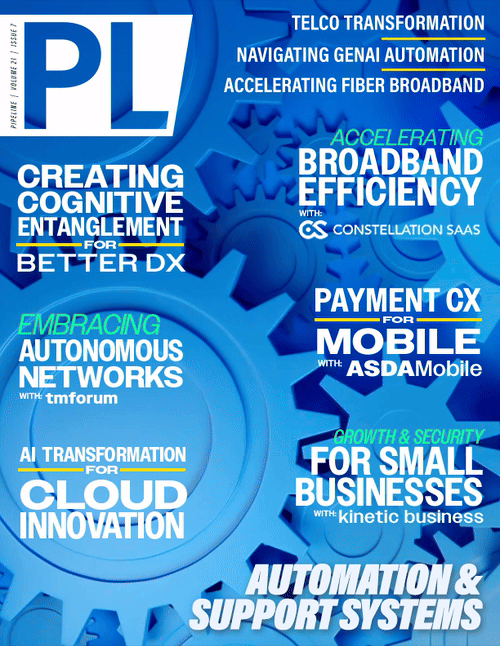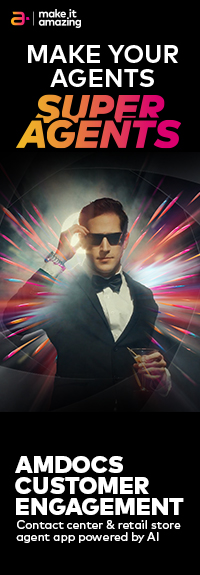Creating Cognitive Entanglement in DT
A Scientific & Technical Basis for the Creation of Human-AI Work Models

In Digital Transformation (DT) discussions, Artificial Intelligence (AI) often receives disproportionate ‘low-resolution’ attention from casual observers. DT leaders frequently find themselves compelled to respond to variations of the question, “How are you leveraging and integrating AI?” Observed implementations of AI models in organizations reveal significant technical challenges from engineering and creative production perspectives. Consequently, creating human-AI pairing models yielding more than incremental improvements has remained elusive. Among the many reasons for this are convenient yet incorrect assertions on both ends of the human-AI spectrum. A deep understanding of how AI and the brain differ while complementing each other is central to developing highly impactful human-AI pairing models. Through this crucial principle, it is hypothesized that the most beneficial models of people and AI will be grounded in a form of Cognitive Entanglement, where AI is linked to a unique user at a cognitive level, incorporating a profound understanding of the user’s mental and psychological structure, heuristics, intuition patterns, and even decision error tendencies within their specific work domain. At this level, we will create innovative collaboration models between people and AI to achieve 10x improvements and returns.
In its optimal form, digital transformation elegantly codifies and operationalizes the technological components necessary for positioning a firm to achieve clearly defined goals through creating value, solving problems, and fostering future innovation. The unprecedented rise in AI's capabilities ensures a significant role in any DT initiative. Understanding rapidly evolving and not fully comprehended technology and its potential impact on the core cognitive functions of the human brain (also not fully understood) relevant to work roles adds degrees of complexity to an endeavor that frequently falls short of expectations. All indicators point to the well-known McKinsey paper documenting that approximately 70 percent of business transformations fail to achieve their goals, a statistic that is likely to grow.
The often-overlooked human factors are critical to DT and creating new human-AI work models. This highlights one of the most significant shortcomings of DT architects: the failure to acquire the necessary expertise in human factors for integrating technology, which fundamentally mirrors the brain – one of the most complex entities we have ever attempted to understand. Scientific rigor is almost universally lacking when the human factors dimension is incorporated into the larger DT strategy. It tends to address challenges simplistically and superficially. An example is the assertion that “if we make data and information available to people, they will make better, data-driven decisions.” While this is a tempting claim, it is contradicted by studies demonstrating the brain's tendency to rely on System 1 (thin slicing) and the associated decision-making errors. This contradiction is also evident at a neuroscientific level in the structure and functioning of brain systems.
A DT-Centric View of AI
AI’s rapid rise in capabilities, once the exclusive domain of humans, has sparked essential discussions about its integration within an enterprise digital transformation context. From an enterprise perspective, this conversation is not simple, even if we set aside philosophical topics. However, it is crucial to understand what AI, in its current and evolving form, “is” and “is not” along multiple continuums. AI is expected to equal or surpass human experts in nearly every field – art, medicine, coding, data science, and more – within the next few years. This has fueled apocalyptic thinking about the wholesale replacement of people across every industry; there will be some replacement due to DT, but AI will more likely augment humans, leading to an evolution of work. Strategic planners must note that predictions regarding the extremes of desirable and undesirable outcomes from AI integration have thus far proven false. A significant concern is that evaluations consistently show increased work and cognitive loads on existing employees after AI's incorporation. Ill-conceived notions about how technology should be designed and deployed will only produce undesirable results from the perspectives of human factors, productivity, problem-solving, and innovation. This strongly indicates the necessity of complex scientific inputs regarding human-AI entanglement in DT strategy and implementation plans. The key lies in AI’s unique complementarity to the brain and our willingness to explore the Art-of-the-Possible in conceptualizing scientifically supported models of collaboration between the brain and AI.
A Scientific Assessment of AI
The following is a scientifically founded assessment of what AI “IS” and is “NOT” to inform strategic DT discussions.
AI is neither intelligent nor aware; it does not possess understanding, solve problems, make predictions, or remember in the same way that the human brain does. However, AI performs all of these functions differently, achieving exceptional results, which allows it to serve as a unique complement to the human brain. For example, human memory is invariant and time-sequenced, reflecting on itself and piecing together narratives from fragments. It is not designed to remember every detail over time but to retain outcomes from collections of occurrences, enabling us to replicate the good and



















